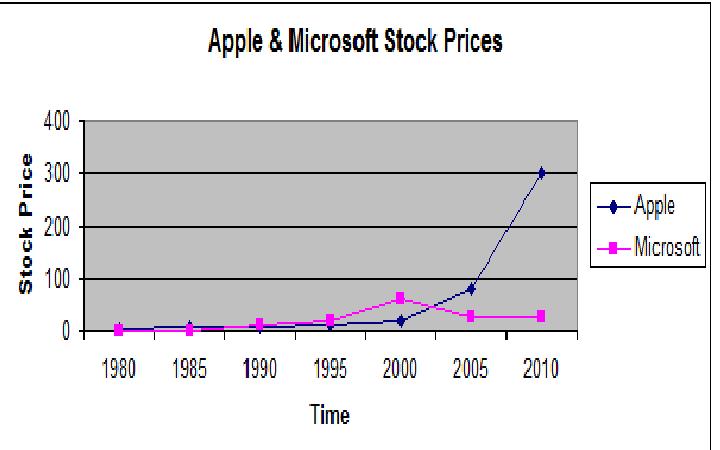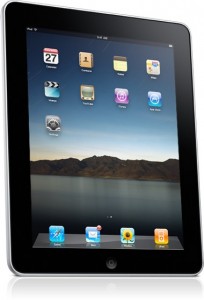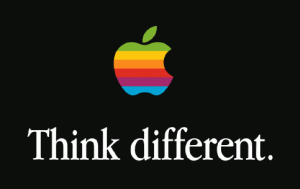 At a seminar on June 9, 2011, on securing the mobile worker, Apple‘s representative said “We truly did not understand what we built.” That’s a direct quote. He went on to say “Here’s how they use it at GE, and Hyatt, and in the pharmaceutical industry.” A few minutes later he said “When users tell us what they can’t do, what they need to do, we listen, so tell us what you need.” At seminars on Microsoft‘s products, their consultants describe their software by saying “This is what we built, this is what it does, and here are our best practices – this is how you should use our software.”
At a seminar on June 9, 2011, on securing the mobile worker, Apple‘s representative said “We truly did not understand what we built.” That’s a direct quote. He went on to say “Here’s how they use it at GE, and Hyatt, and in the pharmaceutical industry.” A few minutes later he said “When users tell us what they can’t do, what they need to do, we listen, so tell us what you need.” At seminars on Microsoft‘s products, their consultants describe their software by saying “This is what we built, this is what it does, and here are our best practices – this is how you should use our software.”
This is it. Apple’s “We truly did not understand what we built,” versus Microsoft’s “This is what we built, this is what it does, and here are our best practices – this is how you should use our software.” These statements define the corporate cultures.
Apple, at $325 per share, is a $300 billion company. With earnings of 21 per share, it has a price earnings ratio of 15.8. It has no debt. It is down slightly from it’s high of around $350 per share, reached a few weeks ago. There are 46,000 employees. Net income of 5.99 Billion on $24.67 Billion. Microsoft, at $24 per share, is a $200 billion company. With earnings of $2.92 per share it has a P/E of 9.44. There are 89,000 employees, $16.4 billion revenue and $5.2 billion net income.
Microsoft’s income per dollar of revenue is higher – but they don’t make hardware. Revenue per employee at Microsoft is $184,000. Revenue per Employee at Apple is $536,000. Income per Employee at Microsoft is $58,000. Income per Employee at Apple is $130,000.
These data are summarized below,
| Employees | Net Income | Revenues | Inc / Emp | Rev / Emp | |
| (Millions) | (Millions) | ||||
| Apple | 46,000 | $5,990 | $24,670 | $130,217 | $536,304 |
| Microsoft | 89,000 | $5,200 | $16,400 | $58,427 | $184,270 |
When I last looked at Apple and Microsoft, October 30, 2010, here, Apple was 305.24 per share, with an EPS, of $15.15 and a P/E of 20.147. It’s market capitalization was $279.59 Billion. Microsoft was $26.28, with an EPS of 2.11, P/E ratio of 12.48 and market capitalization of $227.42 Billion, $52 Billion less than that of Apple. Today Apple’s market capitalization is up 25% to $300 billion and Microsoft’s market capitalization is down about 12% to $200 billion. Apple’s market capitalization is $100 billion higher than Microsoft’s. Apple’s all time high stock price was a few weeks ago, and I expect it will bounce back and keep climbing as long as they keep selling hardware and software that shifts the paradigm. Microsoft’s was in 1999. I don’t expect Microsoft to go out of business, but it’s days of shifting the paradigm and tremendous growth are gone.
 The iPad (Apple site, here) is a paradigm shifting device. It has a dual core A5 processor, 16, 32, or 64 GB of flash memory, and no moving parts (other than electrons, which are hard to keep still). Treated properly, it should last for 10 or 20 years. It adds a layer of durability and obsolescence resistance to personal electronics. It puts us on the road from “disposable” consumer electronics back to durable, sustainable consumer electronics (click here).
The iPad (Apple site, here) is a paradigm shifting device. It has a dual core A5 processor, 16, 32, or 64 GB of flash memory, and no moving parts (other than electrons, which are hard to keep still). Treated properly, it should last for 10 or 20 years. It adds a layer of durability and obsolescence resistance to personal electronics. It puts us on the road from “disposable” consumer electronics back to durable, sustainable consumer electronics (click here).
And it’s selling by the millions. Apple has sold 200 million iOS devices – iPhones, iPads, iPods Touch, that’s one for two out of three Americans. It’s sold 25 Million iPads, 14 million in 2010 and 11 million in the first half of 2011. The sales projections from Wall Street are tremendous, (Florin at UnWired, Schonfeld at Tech Crunch, Elmer-DeWitt at Fortune). People buy multiple devices, e.g., iPhone and iPad or iPod Touch and iPad. These are driving sales of music, apps – by the billions – and the Mac. Microsoft is buying SKYPE, which is a great company with a great product but it doesn’t know how to make money. Apple is going up, both in terms of market capitalization and earnings. Microsoft is going nowhere.
I became interested in Apple’s computers about 10 years ago, when they introduced OS X, an operating system based on NeXT, and derived from BSD Unix. I had a Linux machine, so I had no compelling need to BUY a Mac, but I was interested. I bought my first Mac when I needed to upgrade a machine for a retired friend whos WinTel laptop died. He wanted a new laptop. It was either OS X or Windows Vista. Personally, I like Vista, but we decided to go with OS X. Then I noticed that “everyone” seemed to be carrying iPods. When they needed new laptops a lot of people – especially kids going off to college – are choosing the Mac.
I became interested in Apple as a company when I started studying for my MBA at Marlboro College (here) and noticed about one third of the students were carrying iMacs. I also noticed that the students with Macs tended to be younger. The students with Windows machines tended to be older or carrying machines they used at work.
Apple hardware is beautiful, elegant. The magnetic power interface on the Macbook seems designed to prevent the laptops from crashing to the floor or the power cord from breaking the motherboard. This enhances the durability, the sustainability of the device. I don’t know why Acer, Dell, HP, Lenovo, Panasonic, Sony, Toshiba, and the rest are not following suit. Maybe because IBM didn’t do it – but then again IBM no longer designs personal computers.
Other than Exchange, which is the e-mail server software of choice, that is the e-mail program in data centers, Microsoft really hasn’t invented much that has become a commercial hit – nothing that stands out in my mind. Active Directory is a good implementation of LDAP. SQL Server originated as Sybase with a good graphical user interface. Microsoft did a good job on the GUI.
I think Microsoft has good people, but their culture is one that is institutionally afraid of failure. Apple can’t like failure, but it looks like they are not afraid to fail. Their two biggest mistakes, the Lisa and the Newton, seem to me, as an outsider, to be great technology at the wrong price or time. The Newton was ahead of its time. Today’s iPad is the Newton revisited. Similarly, the Lisa was a great machine that had limited commercial success. It was big, powerful, and expensive. Apple re-invented it as the Mac. And the Mac today seems to be more like the Lisa than like the original Mac. So it seems to me that the product managers and designers at Apple takes their mistakes, figure out why they don’t work, and address the issues.
When I first looke at Apple, here, 8/21/10, I wrote “What might be called “The Apple Way” is:
- Discipline,
- Hard Work,
- Design for Simplicity,
- Good Customer Service,
- Making Our Own Rules,
- Products that Feel like Magic,
- Things People Love.
Think Different.
In the interest of disclosure, I don’t work for Apple. But I’d love to.
